Even if you don’t recognize the name, chances are you have seen his work. Cory Richards is an award-winning photographer who has captured iconic images from around the globe. He has climbed some of the world’s highest peaks, including the thirteenth-tallest mountain, Gasherbrum II (G2), where he and his two climbing partners were swept away by an avalanche during their descent. After realizing that they had all three survived the harrowing encounter, Richards turned the camera on himself and captured a terrified selfie that would grace the cover of National Geographic. That event would take Richards down a path of self-destruction and then recovery as he sought to cope with the effects of his post-traumatic stress disorder (PTSD).
The following year, Richards was named the National Geographic Adventurer of the Year (2012). Since seeking out therapy, he has returned to the top of his game and has climbed Mount Everest twice (once without supplemental oxygen) with climbing partner Adrian Ballinger.
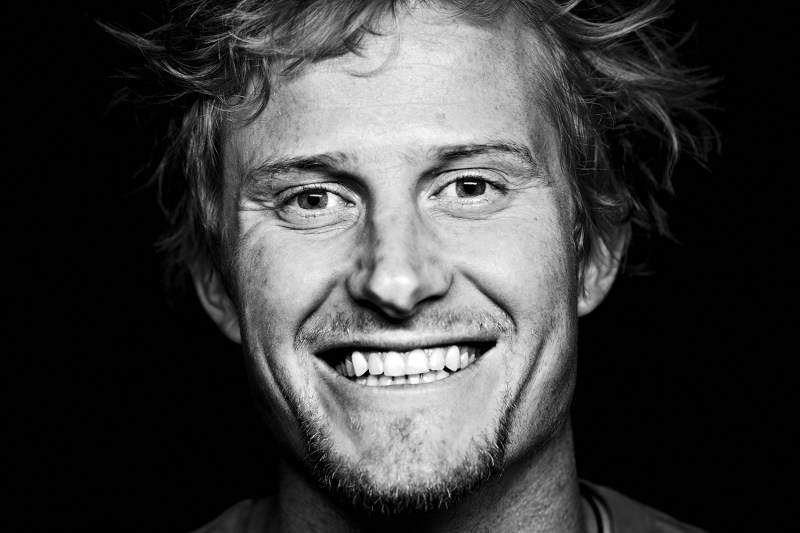
I recently had the opportunity to connect with Cory Richards to discuss his passion for the outdoors, photography, his struggle with PTSD, past and future expeditions, and, of course, gear.
The Manual: People are motivated by many reasons to get into the outdoors. Was there something that sparked an interest for you or is it something you’ve always been drawn to?
Cory Richards: For me, being outside has always been a part of my life because of the way the I was brought up. My parents were incredibly devoted to their lifestyle and that meant being outside. They were very into backpacking, climbing, and skiing, so my brother and I were brought up in that same way. We, in every way, joined their life rather than altering their life, and, of course, there were things about us that altered their lives. But they were adamant that we were part of the life they were living versus, you know, something that was there to disrupt it. And because of their love for the outdoors, it was built into us from a young age, and so it was a natural progression for me to, you know, start engaging with the outdoors on a more intense level as I grew up.
There isn’t any one most memorable expedition. There’s not one that comes to mind. That’d be like trying to pick your favorite M&M out of every M&M you’ve ever eaten.
It was a place that I always understand; that was a place where I could sort of put my energy and where I could feel very much like I belonged. As I grew into that space, I also started to understand that we, as a human family, are very much a part of the natural world versus [being] apart from it, which I think is a common misconception — and … one of the ideas that fuel our continued disengagement with the natural world: We’re so insulated from it that we don’t feel like we’re actually a part of it when in fact we are, in every way, a part of it and rely on it.
TM: What is your most memorable expedition to date?
CR: There isn’t any one most memorable expedition. There’s not one that comes to mind. That’d be like trying to pick your favorite M&M out of every M&M you’ve ever eaten. They’re all good and they all taste similarly but have different qualities or something like that.
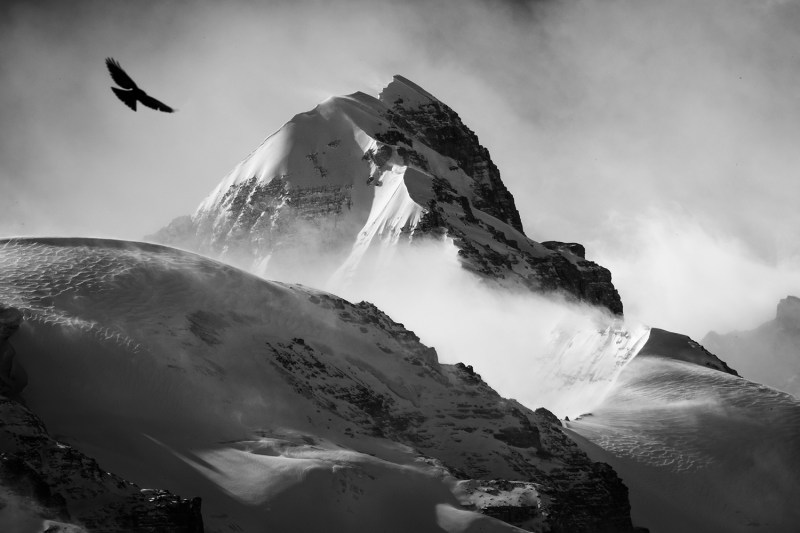
I don’t know how to say that there is one that is more or less memorable than another because each one holds its own unique experiences. Obviously, there are some that have altered and shifted my life more profoundly than others, namely climbing Gasherbrum in winter in Pakistan — and you know the avalanche that happened on the descent that changed the course of my career. That changed the trajectory of my life and it was really, really important. Is that the most memorable? Not necessarily — there are others that are equally as memorable and in some ways equally as impactful but just in more subtle ways … My first assignment for the magazine was one that had a massive impact on my life because I was shooting for National Geographic for the very first time. And that was to the border of Nepal and Tibet in an area called Mustang.
TM: What about your most challenging?
CR: I think actually one of my most challenging expeditions was following the Quito River from the Angola highlands down through the Caprivi strip in Namibia and into the Okavango Delta in Botswana. I was in Africa for nearly four months following this riverway and trying to understand all of the interconnected pieces that tied it together and that made it … this cohesive ecosystem. But in doing so, we had to descend 1,000 miles of previously uncharted river that was oftentimes an incredible grueling task and it just took a lot out of me mentally and physically. I was also amidst a traumatic upheaval in my personal life at that point and so I think, emotionally and physically, that was the most challenging expedition that I’ve ever been on. There are others that come to mind but certainly not in the same way. I mean, climbing Everest without oxygen is also incredibly emotionally and physically challenging, but it isn’t quite the same, as far as the most challenging expedition I’ve been on.
TM: You’ve captured images of some of the most iconic and rugged landscapes on Earth. Which one stands out the most to you? Was it the journey getting there? Or, the venue itself that makes it most memorable?
CR: I think the most impactful landscape that I’ve actually photographed is Queen Maud Land in Antarctica, a small area within that larger geographic region called the Wolthat Mountains … The reason this area stands out to me so much is because of how desolate it is. It’s one of the most inhospitable environments in the world with the katabatic winds buffeting off the Antarctic plateau coming down and blowing over 100 miles per hour, quite often for days on end. It becomes this wind tunnel that is scoured with these massive ice fields that go on seemingly forever. They echo in me a sense of isolation and loneliness, not so much as a singular human but as our planet is in the cosmos it is a small island. And I feel a certain resonance when I’m in those huge desolate landscapes where I feel like I’m the small island of life amidst a massive, seemingly lifeless canvas in front of me. The truth is there’s lots of life that persists in Antarctica but the landscape, in the way that it presents itself, is such that it has the ability to echo a sense of isolation within one’s self, and because of that I’ve felt always very drawn to it but I’ve also felt most impacted by it. Also, there’s a reduction in sort of the colors that you see. It’s very blue and white and then you have this striking orange stone that seems to jut out of nothingness … kind of like monsters’ teeth erupting out of this frozen landscape. So, creatively, visually, emotionally, that landscape has always been one that has stuck with me ever since I visited there in 2013.
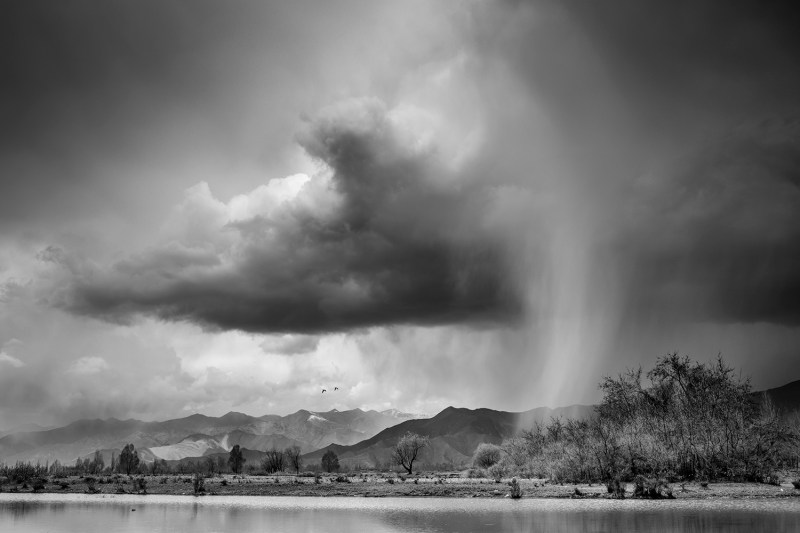
TM: While many focus on just the journey or the trek to these vistas, you must use a different mindset. How do you prepare or process that part of your job and skill set?
CR: What’s interesting for me is that I don’t think there’s a different mindset around what I do versus anybody else … I think every photographer approaches things uniquely and differently, which is what makes their work unique and different. Now, many take a similar attack, which produces similar work. In my experience, my motivation has always been about the human experience that is uncovered or informed by sort of the nature of these expeditions.
And so for me, my process has been about examining myself and taking cues from myself when I start to feel unraveled, when I start to feel exposed, when I start to feel reduced. I take those cues from myself and start to look for those indications in other people as well, so it’s more of an examination of psychology and the nature of our ability to do things, to overcome things, to adapt to situations — be it a conflict zone or at high altitude — and in doing so, you find a genuine, authentic representation of humankind and the human family … My meditations around that are trying to be highly self-aware. It’s looking more internally to see what happens to myself in a process and then using that information to look externally and try to capture that.
TM: Your Everest excursions with Adrian Ballinger received a lot of publicity, not only for your social media presence but for your honesty about the personal and physical struggles you both experienced. Why was that an important part of the story for you to share? What kind of responses have you gotten from fellow climbers and the general public?
CR: You know, Adrian and I took it upon ourselves to try to curate an uncurated look at what an expedition actually looks like and how it unfolds. The importence behind that, the motivation was that social media only plays to the high points or the high notes of adventure travel, expedition travel, cultural travel, things like that. And what we wanted to do was sort of peel back the façade and give people an honest look at what it actually looks and feels like to do an expedition of this nature. And for me, that is tied directly to the mental health issues that I’ve worked around my whole life. And so you know, from it’s very inception, and sort of at its base, we want it to be authentic, so any time something came up for me that was authentically hard, difficult — or conversely anything that was authentically captivating, beautiful, elating, joyful — I wanted to share those things.
And it was important for me to key into and notice the moments when I was experiencing sort of the darker sides of my personality and voice them. And the reason that’s important for me is because it gives other people the opportunity to do the same: When they see somebody else talking about it they feel as though they are given permission to discuss the same topics more openly. And that’s the whole point about talking about things openly is that it gives other people around you permission to do the same. So I’ve chosen to do that throughout life. I’ve chosen to be a person approaching some more of the awkward or off topics and I try to get at them with as much honesty and sincerity as I can in order to allow other people the same space.
TM: The acknowledgment of the existence of PTSD for extreme athletes was a brave move. Why was that an important part of your story for you to share? What kind of responses have you gotten from fellow climbers and the general public?
CR: The response to the acknowledgement and recognition of PTSD in outdoor, athletic endeavors I think has been mixed. I think a lot more people are discovering that these environments and these experiences can actually cause traumatic stress but there are still sort of old-school figures who hold to the idea that whatever happens happens and you don’t have to talk about it. You don’t have to make it everyone’s business and there’s a certain element to that which I agree with, which is we don’t have to make our personal turmoil everybody’s business.
That’s not what I’m trying to do. What I’m trying to do is make the public statement that these things are real and they exist and if you’re experiencing any sort of post-traumatic stress or traumatic stress in any regard from any event, it’s okay to seek out help and to talk about it. I think oftentimes people feel as though by talking about myself in these terms that I’m making this about me, when in fact it’s the exact opposite. What I’m working to do is make the forum and the platform more open and adaptable to these experiences and voices that come forward, because they need to — because there’s no reason that people need to live with that trauma and carry that stress around with them.
Great images are not composition, color, light. They can be all of that and they can be all of that combined with a moment, but truly transcendent images are the ones that make us think and feel and get in touch with our most basic human selves.
So you know, the response has been mixed. There are people who I look up to and really regard who sort of pushed it off and said it’s snowflake culture. And then, there are people who I would have never expected, sort of the hardest and most stoic people, who have opened up and said, “You know, that really resonates with me and I think I’m experiencing some of the same things that you’ve talked about.”
TM: Now, let’s talk tech and gear. What are your top picks and must-haves regardless of your destination?
CR: So as far as cameras go, the cameras that I’m using right now are the Nikon Z 6 and Z 7. This is primarily for the workhorse cameras and the mirrorless work just because of their low-light abilities and the abilities to switch back and forth between super high-quality video and still photography.
Generally speaking, if I’m going for a versatile — to have a really versatile, dynamic kit with me — I’ll be using the NIKKOR Z 24-70mm f/2.8 S and I’ll have the NIKKOR Z 14-30mm f/4 as well as a 70-200mm. And that’s a catch-all kit that’ll allow me to sort of approach pretty much any subject pretty effectively.
But for hardcore or more in-depth photojournalism work, I like to work with the fixed focal length lenses so I like using the NIKKOR Z 24mm f/1.8 S, sometimes the NIKKOR Z 85mm f/1.8 S, not as much but it’s still a super effective lens. I just tend to like to be closer so my favorite focal lengths are more in that 24 to 35 range, sometimes up to 50, so the NIKKOR Z 35mm f/1.8 S is also super effective and I really love that.
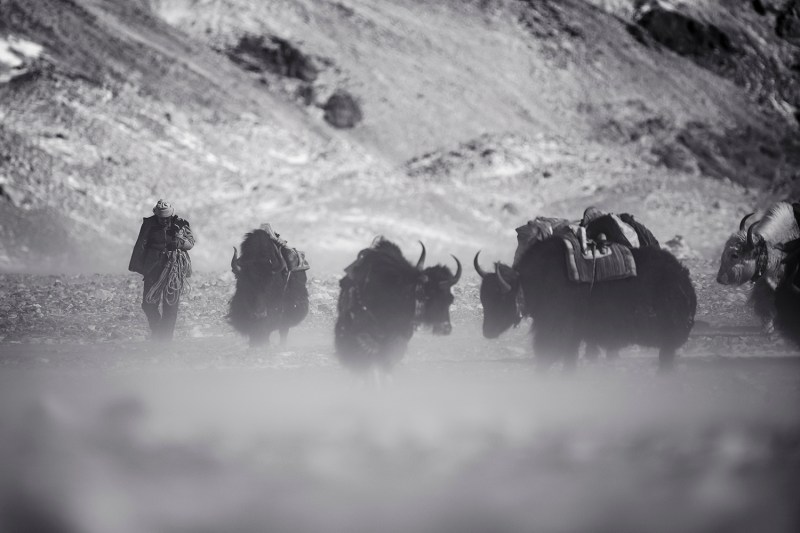
And the other camera that’s been really cool is the Z 50. I like that camera because it is so simple to use, it is so compact, and it is so user-friendly. But even on a professional level. if it’s just me and one camera out there, sometimes the Z 50 accomplishes all the goals I need. I can just throw it over my shoulder, walk out the door, and not have to worry about it and again it’s a super simple camera to use.
TM: What one piece of gear (other than your camera) will you not leave behind?
CR: The one piece of gear that I always take — this is funny … But the one piece of gear that I always take is a portable, wireless speaker. The reason is there’s something uplifting, lightening, and community-oriented around having music and being able to play music publicly with your friends, listen to things as you sit there and chat into the night. And if you’re alone listening to music while you work, if you’re editing listening to music, I think music brings a certain element of joy and levity to things. It can infuse us with emotion and it can inspire us. And I think music is part and parcel with the human experience, so bringing music along with me in a quality fashion has always been of utmost importance. And I extend that into, you know, headphones — sort of wireless earbuds — as well as, you know, any sort of way I can carry music with me … It’s really important to have some audio tools in the field to experience that sense while you’re out there [sic].
TM: Even for those just starting to photograph their adventures for fun, what tips do you have to capture the most memorable images?
CR: My greatest piece of advice for anybody trying to create memorable images — truly memorable images — is to remember what makes an impactful image. What makes you walk away from something and continue to think about it? And if you can pinpoint what that is and use that to inform you carrying forward when you make your own images, I think you’ll be successful.
The real transcendent, transformative images are the ones that get inside of us and haunt us in some way. And if you’re really looking to make truly impactful images, find that which haunts you and stalk it, pursue it and dive deep into it.
For me, and I think for most people, it comes down to emotion. This can be an image that makes you feel, that makes you feel beyond sort of a topical sense of beauty or a topical sense of awe. Perhaps it’s something that makes you feel deep down inside, something that moves you. That makes you wonder, that makes you consider. That stops you. That makes you pause and brings you to a present moment and makes you connect with yourself.
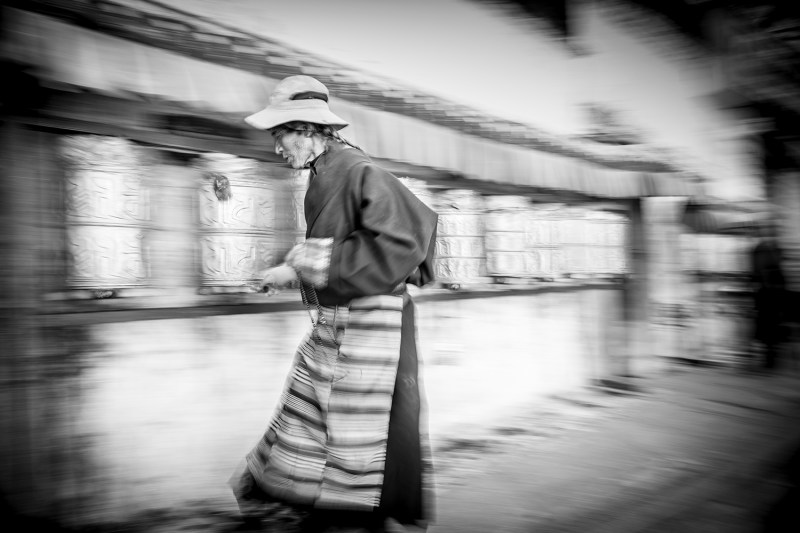
Great images are not composition, color, light. They can be all of that and they can be all of that combined with a moment, but truly transcendent images are the ones that make us think and feel and get in touch with our most basic human selves. Big images, big vistas of little people in big landscapes — they make us feel a certain sense of awe and wonder but they don’t necessarily move us. They might inspire us somewhat, but we’re inundated with that. The real transcendent, transformative images are the ones that get inside of us and haunt us in some way. And if you’re really looking to make truly impactful images, find that which haunts you and stalk it, pursue it and dive deep into it.
Play with it until you are exhausted by it and when you’re exhausted go deeper. Those images, those are the ones that become transcendent art, those are the ones that speak to a larger audience. Those are the ones that have the ability to shift tides and move mountains. But you know, I’m not saying that I’ve ever even made one of those images. But as a pursuit and as a way of pursuing imagery, that’s how I think of it.
TM: As Everest season approaches, what changes (if any) would you like to see made when it comes to how climbers and (Sherpas) are permitted on the mountain, specifically when it comes to safety?
CR: Truthfully, I think there are so many things that need to change on Everest but I also believe that Everest gets a lot of bad press. It’s easy to see lineups on the summit and misunderstand the nature of what’s happening there. This last year specifically we saw massive lines but that was because the weather window was truncated and pushed into a two-day period in which everybody on the south side was forced to climb at one time. Normally, that wouldn’t happen so we have to understand the context in which the information we’re seeing is being created but we also have to understand that yes, there’s a problem with management and we need to look at that more holistically.
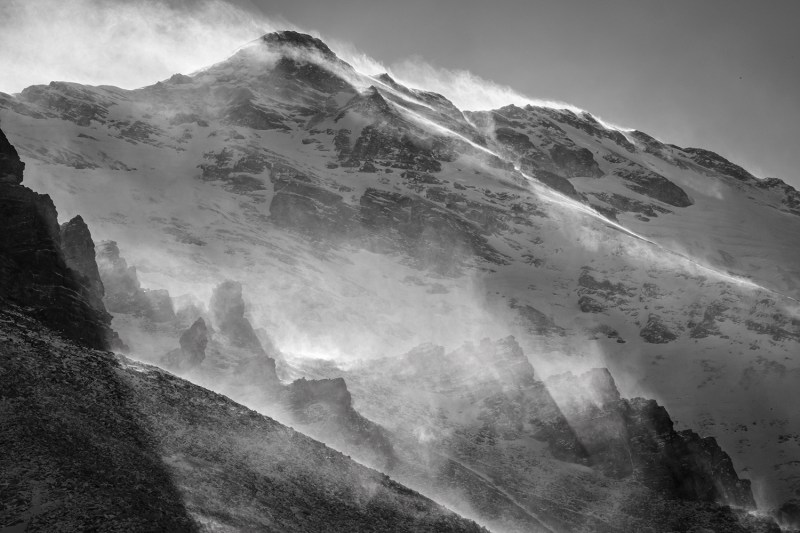
What I would like to see is deeper and more strict regulations specifically on the Nepali side that targets how climbers are granted permission to climb and how many guiding companies are allowed to take people there and how many clients are allowed to go on any given year. It’s hard to imagine that would happen given Nepal’s sort of socioeconomic status in the world, which is unfortunate, but I think what we need to move toward is louder voices within the climbing community speaking up for the safety of the Sherpa community, the safety of the high-altitude worker community, and, ultimately, the safety of everybody on the mountain. And in doing so, we can address some of the issues that are putting people at risk.
TM: We can’t let you go without this last question. What’s next for Cory Richards?
CR: Well, I have some big trips coming up. I’m working on some TV stuff right now, but for the next month, I’m gonna be at home creating and just tossing over creative ideas to one of my partners in crime here that I often work with, Keith Ladzkinski, and coming up with plans for the coming year. So right now, I’ve got a lot on the plate but none of it is necessarily in motion and I’m enjoying that downtime to allow things to sort of just settle and fall where they may.
Cory’s Top Gear Picks
- Workhorse cameras
- Nikon Z 6
- Nikon Z 7
- Everyday camera
- Nikon Z 50
- Versatile lens kit
- Nikon NIKKOR Z 24-70mm f/2.8 S
- Nikon NIKKOR Z 14-30mm f/4
- 70-200mm
- Professional lens kit
- Nikon NIKKOR Z 24mm f/1.8 S
- Nikon NIKKOR Z 35mm f/1.8 S
- Nikon NIKKOR Z 85mm f/1.8 S


